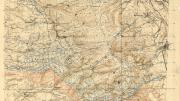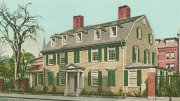Professor Donald Davenport of the Harvard Business School hoped to teach the incipient captains of industry in his classroom, who tended to look on labor as a commodity, about the human factor in manufacturing. I felt that if I could obtain photographs which reveal the courage, industry, and intelligence required of the American working man, he wrote, perhaps our students could learn to look upon the working man with some degree of respect and sympathetic consideration.
 |
| A worker in the gleaming world of the Continental Can Companys Camden Plant, circa 1936. |
| Photographs courtesy of Baker Library / Harvard Business School |
In the 1930s, Davenport and colleague Frank Ayres wrote to leading businesses to request photographs for classroom instruction. They got more than 2,100 of them, from 115 companies. These images of men, women, and machines are today among more than 20,000 photographs at the schools Baker Library that record the growth of industry in the United States and in South and Central America. A multiyear effort by the staff of the historical collections to identify, catalog, preserve, and organize these visual records into collections has just ended, and, to celebrate, the library has mounted an exhibition of about 50 of those gathered by Davenport and Ayres. Curated by Melissa Banta, The Human Factor: Introducing the Industrial Life Photograph Collection at Baker Library may be seen there through March 7 and on-line at www.library.hbs.edu/hc/hf.
|
|
| Top: The futuristic form of a painter Blasting Bodies to a Base, circa 1933, at the Packard Motor Company. Above: Trimming His Whiskers, circa 1935. A goggled workman at Midvale Steel cleans up a 51,000-pound casting of a turbine casing. This image is by John Mudd; the other photographers are unknown. |
| Photographs courtesy of Baker Library / Harvard Business School |
Big companies were eager to donate photographs to Harvard. They wanted to represent themselves as powerful industries with devoted workers and happy customers, to combat bad publicity from labor unions, and to make their employees feel valued. They were aided by superb photographersLewis Hine, Margaret Bourke-White, Russell Aikins, William Rittase, and scores now unknownmany of them influenced by the Cubist movement. Banta writes in the exhibition catalog, Experimenting with light, composition, and composite photography, Machine Age photographers created elemental shapes and abstractions of industrial production that extolled the functional beauty of worker and machine.







